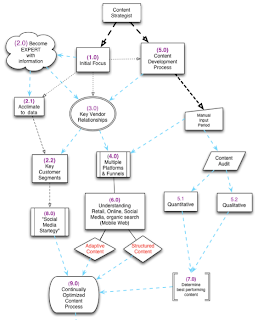Friday
Apr052013
Mobile Web, Part I
 Friday, April 5, 2013 at 07:43PM
Friday, April 5, 2013 at 07:43PM Mobile Web: Part I
 |
| Figure 1 - Click to make image larger |
National Public Radio (NPR) already has it figured out with their COPE System = "Create Once, Publish Everywhere." Check out this latest article about mobile web from "A List Apart."
"Get your content to go anywhere because it's going to go everywhere." ~ Brad Frost 2
(bradfrostweb.com)
In understanding this it just makes so much sense that you wonder why this had to actually evolve — why didn't we think of this years ago? There are many components to mobile web, some just are a rehashing, or fine-tuning of old design principles; and others, like "adaptive content" — really need to be studied, understood and memorized for future use.
And according to Rich Ziade, CEO of Readability, "...he thinks this problem [issue] is even bigger than mobile...'content needs to be ready to go in all these new contexts. Content is being plucked and refitted everywhere.' " 3
The most important thing about content is that we usually think about it as something that goes somewhere. But now you have to stop thinking about it that way.
"What would it look like if you thought of your content as a service that could be accessed by a variety of different platforms, rather than as a substance that lives in a particular location." 4
While I have been reading and researching this subject I have thought about it in two different ways, metaphorically and as a process, or:
- like a juke box
- or as a "continually optimized content process" (COCP) (see Figure 1)
Ultimately, this will be much more work, but the results will be so worth it in dollars and "sense. Imagine that the 60% of people who now ONLY access the web via their smartphones will be able to get the same type of experience they would on a desktop — that's hard to estimate, but it's not a bad thing.
(More to come in Part II, further discussion about adaptive content, responsive content, the juke box and COCP)
1 Content Strategy for Mobile, Karen McGrane, A Book Apart, 2012, page 64.
2 Ibid, page 47.
3 Ibid.
4 Ibid, page 48.